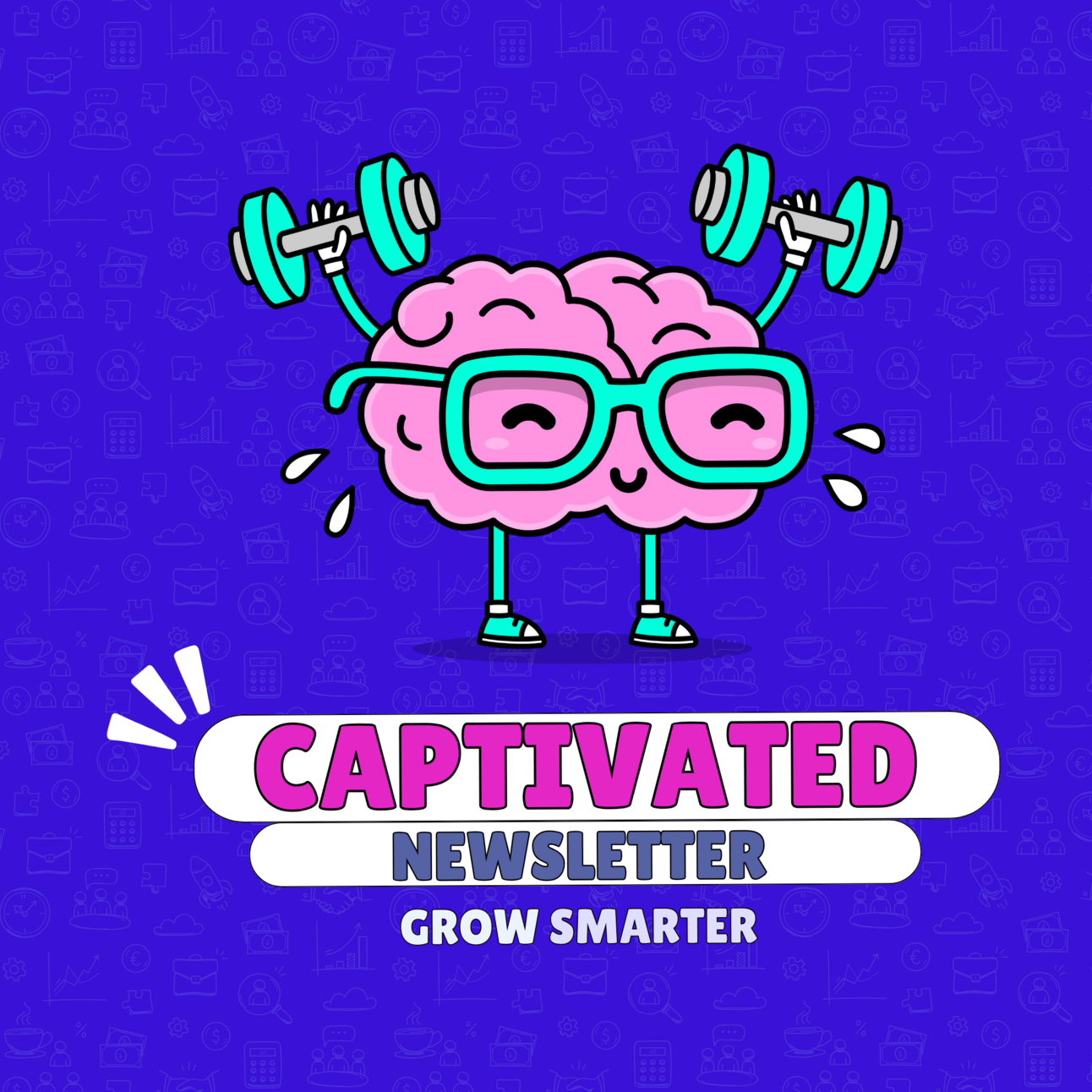
CAPTIVATED: unlocking what makes us tick, click, and buy, with psychology-backed tips and brain science shortcuts.
Today’s Edition of Captivated: Your Brain on Netflix: Why Autoplay Keeps us Watching: The Brain Science Behind 200 Billion Hours of Binging
How many series have you binge-watched this year?

You know how you sit down thinking, “Okay, just one episode,” and then ... (magically?) … it’s 1am? (No judgement).
Netflix’s autoplay feature, the little countdown that rolls you righttt into the next episode, is one of the simplest, sneakiest, and smartest tactics that tunes out the decision center in our brains.
Here's why it works and how you can tap into it…
(continues below).
🧠 SMART (FREE) TOOLS YOU CAN USE: FROM OUR SPONSORS
Is your social strategy ready for what's next in 2025?
HubSpot Media's latest Social Playbook reveals what's actually working for over 1,000 global marketing leaders across TikTok, Instagram, LinkedIn, Pinterest, Facebook, and YouTube.
Inside this comprehensive report, you’ll discover:
Which platforms are delivering the highest ROI in 2025
Content formats driving the most engagement across industries
How AI is transforming social content creation and analytics
Tactical recommendations you can implement immediately
Unlock the playbook—free when you subscribe to the Masters in Marketing newsletter.
Get cutting-edge insights, twice a week, from the marketing leaders shaping the future.
🎧 Rather Listen than Read?
Scroll all the way to the top and click: Listen Online / Hit the Play icon
🧭 INSIDE THIS EDITION
📈 FUN FACT: DID YOU KNOW?
The Netflix Autoplay feature caused the biggest spike in ‘hours watched’ of any feature they tested, according to one of the engineers.
Netflix subscribers watched nearly 200 billion hours of content in 2024.
🧠
.. Brain Science-Backed: The Psychology Behind It ..
In those few seconds between the credits and the next episode, a handful of brain shortcuts kick in, and autoplay takes full advantage of them:
🧠 Decision Fatigue:

Our brain is like a phone battery; it drains with every choice we make. By the end of a long day, even deciding whether to keep watching feels like work, ugh.
The prefrontal cortex (the part that handles self-control and weighing trade-offs) feels depleted. Every extra choice adds cognitive load.
Autoplay removes the decision entirely. Do nothing, and the next episode just … happens.
🧠 Default Bias:

Our brains love the path of least resistance.
The anterior cingulate cortex (ACC) tracks effort like a price tag, and we don't want to ‘spend’ too much effort.
If the default is “next episode plays,” that’s what we’ll stick with.
Opting out takes effort; opting in takes none. Autoplay flips “stopping” into the harder action, so most of us just … don’t stop.
🧠 The Zeigarnik Effect:

Our brains can’t stand unresolved tasks and stories.
Cliffhangers create prediction errors: the brain expected closure and did not get it. This keeps the story active in our working memory and our brains hold this on a mental “to-do” list.
A cliffhanger is basically a psychological open loop, creating tension in our memory, like an itch. Autoplay scratches this itch before we even think twice.
🧠 Dopamine Loops:

Every new episode brings a hit of novelty with new scenes, jokes, or twist, which brings a hit of dopamine.
It’s our brain’s reward system lighting up. Autoplay shrinks the gap between hits, which keeps our brains in “just one more” mode.
Fun Fact: It’s the same system casinos use with slot machines: small, continuous rewards keep us hooked.
Put together, autoplay removes every natural off-ramp our brains might take. So, we keep watching.
🥷
.. Use this Psychology Strategy ..
1: Make the next step the easiest step
Queue the next step automatically: next lesson in a course, next article in a series, a one-tap ‘repeat last order.” Label buttons as "Continue". Let “keep going” require zero effort.
2: Design visible loops and clean closures
Tease what’s next and show progress that begs to be finished, such as: “2 of 4 steps done,” “Chapter 3 up next,” “Unlock your last [item].”
And people move faster when the goal feels close (due to the goal-gradient effect).
3: Build small, repeatable loops
Same time, same place, same trigger. Weekly post at 7pm, or a “Continue where you left off” card that appears on login. Consistent cues teach the brain the sequence.
✌
.. tl;dr & captivated wrap-up ..
Netflix's Autoplay works because it’s designed for our brain: reducing decisions, making “continue” the default, keeping stories unresolved, and speeding up dopamine hits.
Together, they make “just one more” feel natural; we literally do not even think about it.
Designing products so continuing is effortless, is a smart way to get people captivated and sticking around longer.
Ah, sometimes it feels like time is on autoplay. It’s already October! Keep on going. You’ve got this.
🎬 And, if you already know what’s coming to Netflix this month, you might also want to check out Rotten Tomatoes’ list of 100 Best Netflix Series to Watch Right Now.
Just sayin. Treat yourself to a lil story time sometime.
👋 Until next time,
Profit Nic
What did you think of this edition?
.


